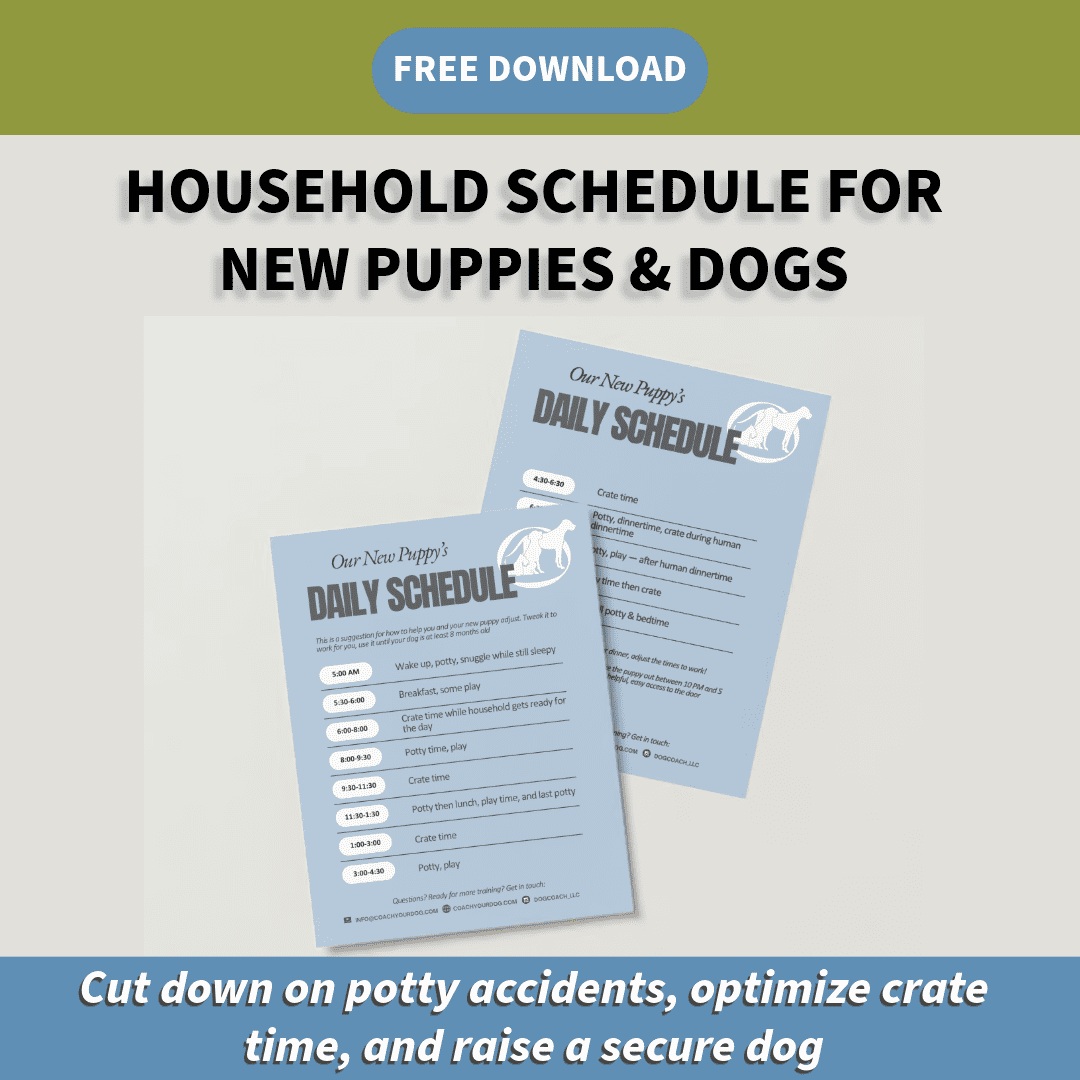Raising a well-behaved dog starts by establishing a calm state of mind during puppyhood. Beginning with crate training your new pup will set your family up for long-term success. When you crate train your puppy, you teach them how to self-settle. This assigns your puppy the job of chilling out, teaching them to access a state of relaxation that will help you train a calm, confident dog.
To start crate training a puppy, schedule naps in their crate, with the door closed, throughout the day. Our example schedule is a free download to get you started. If you’re starting from scratch, start with a few minutes and work up to an hour-long nap. Read: How to crate train a dog.
Why is a Calm Puppy so Important?
If your dog is too amped and adrenalized, it’s hard to get through. He’s focused on the squirrel, ball, delivery driver, anything but what you’d like. Establishing a calm baseline for your dog becomes vital as your puppy grows bigger and stronger. Starting early to train your puppy’s mental state helps teach better behavior choices.
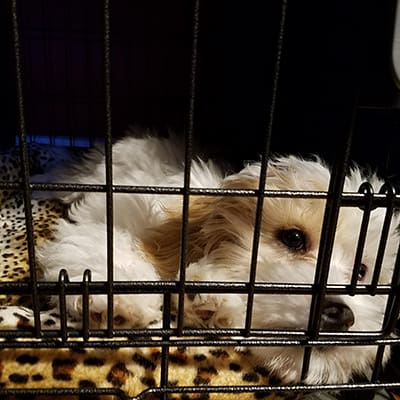
Why is Crate Training Important?
Beyond the practical use of keeping your dog out of trouble while you’re out of the house, crate training a puppy allows them to check out and fully relax. Done properly, full crate training teaches your dog to access a deep state of calm. Your dog’s not pacing, scanning, barking, or otherwise looking for things to get into. Dogs are den animals and the dog crate provides the safety and security all canines need in their den.
When you teach your dog to access more deep calm, you get better behavior overall from your dog. Decompressing throughout the day means your dog’s level of adrenaline is lowered. Crate training, along with household structure, leash work, and your leadership sets clear expectations for your dog’s behavior.
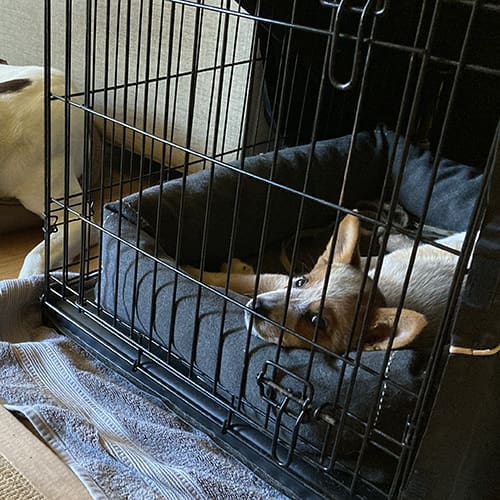
How Long is the Crate Necessary?
The best dog training results are achieved through clear boundaries and consistent expectations. Unclear boundaries and inconsistent expectations make it hard for our loyal canine companions to understand what exactly we are trying to communicate. If you’re experiencing behavioral issues of any kind, you will want to keep using the dog crate. The student (your dog) needs more guidance before they’re ready to make better choices on their own. Additional crate work reinforces that deep state of calm at home so that your dog can access that state of mind in other exciting, stressful, or demanding situations. Plan to keep a crate schedule at least for the first two years of your dog’s life.
Giving up on using a dog crate is the #1 thing people report when their dog is making poor behavior choices. If you notice a backslide in your dog’s behavior, go back to basics. If you’ve relaxed the crate naps and schedule, go back to consistent crate time. Even a dog that has not had regular crate time for months, even years, will be able to go back to crate naps. Start with short naps and increase the time over a few days. Dogs never forget earlier successful crate work and can surprise owners when they enjoy relaxing in their crate.
The more use of clear training tools you have at the outset, the stronger your dog’s conditioned response will be. Good choices will follow because you are shaping their behavior in comprehensive ways. Read: “When can I stop using the crate or prong collar?”
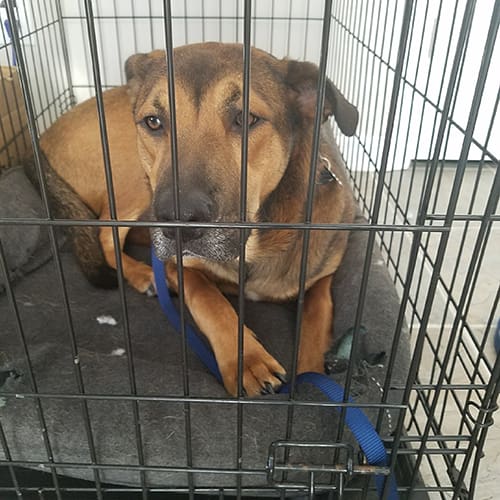

Everyday Calmness in Dogs
Having a great, well-behaved dog begins with a calm state of mind. Dogs that have learned how to self-settle in their dog crate then go on to learn the duration work of the Place command. With practice, your dog will be able to self-settle around the house by curling up and allowing life in the family to go on without excessive attention, barking at the window, destroying shoes, or any other nuisance behavior. Your dog’s chill behavior in the house then transfers to out in the world: walking around busy downtown, passing other dogs, playing with other dogs, coming when called. Your consistent leadership at home with your new puppy will be the biggest factor in having an awesome dog. Read: Calm State of Mind
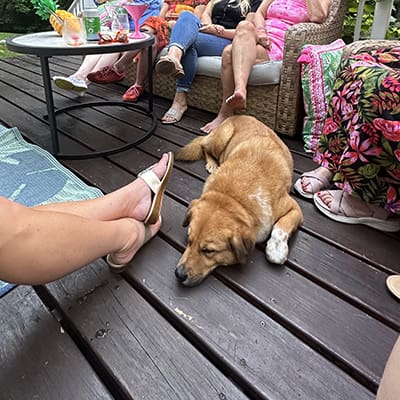
Now Offering Training in Somerville, Cambridge, Medford & Surrounding Area!
See the full list of areas served
Our In-Person Programs
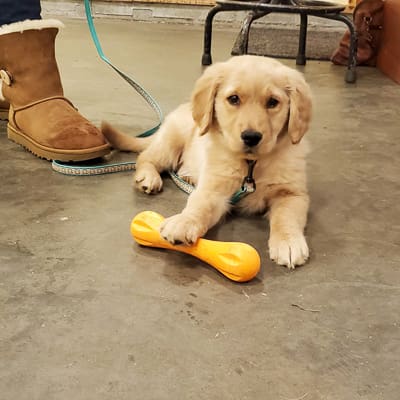
Team Puppy Training
Encourages your leadership and show how you to nurture good behavior.

Foundation Training
Covers the basics of good dog behavior as well as some behavior modification.
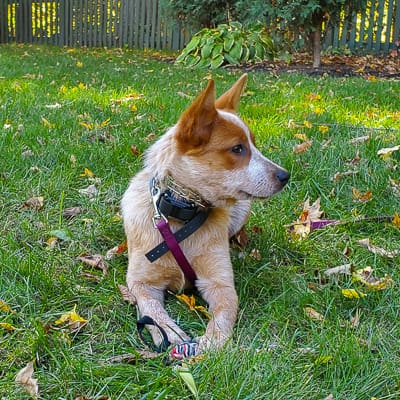
Remote Collar Training
Foundation Training with e-collar for total off-leash freedom and behavior modification.
What our clients have to say...
Dog Coach listened carefully and observed keenly my interaction and tone of voice with Bella. At nearly 6 months now, she is the best-trained dog I've had. It was a worthwhile experience!
We want to thank Dog Coach for your patience and encouragement! Our dogs are really coming into their own as the perfect family dogs we were looking for!
Such a great investment! We got a puppy and had a toddler... It was overwhelming at first. Working with Dog Coach has been the gift that keeps on giving.

